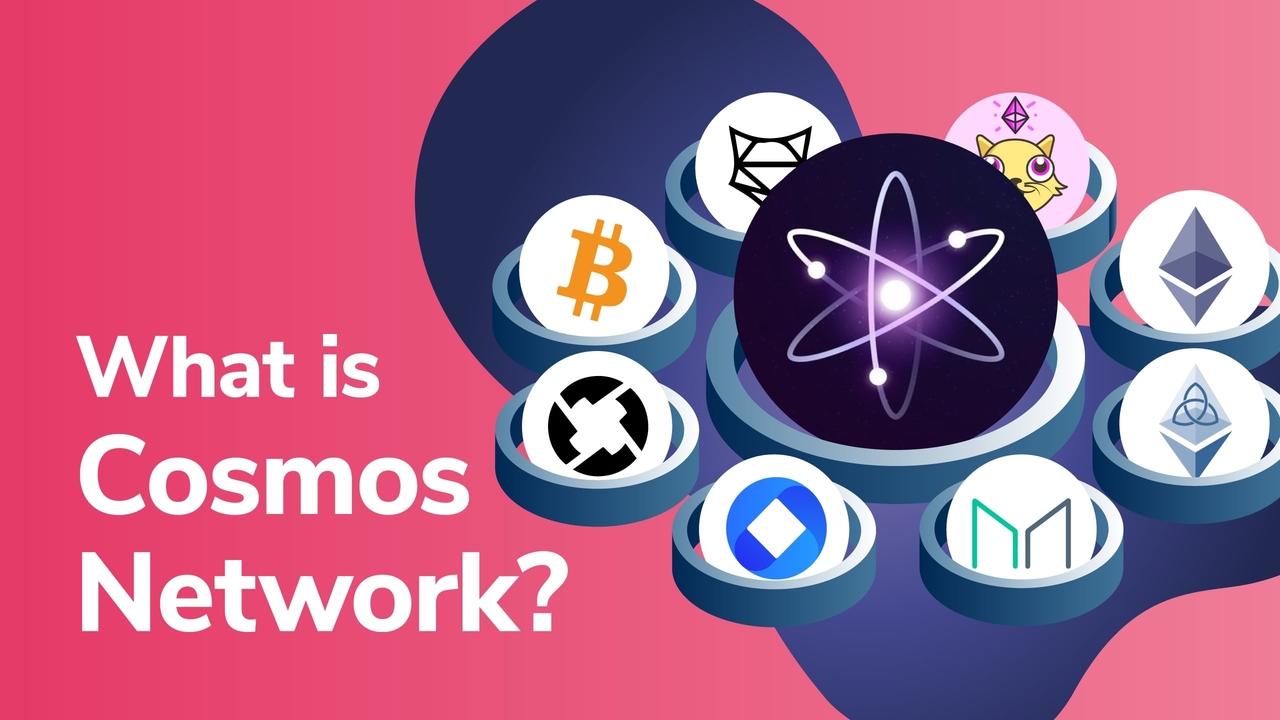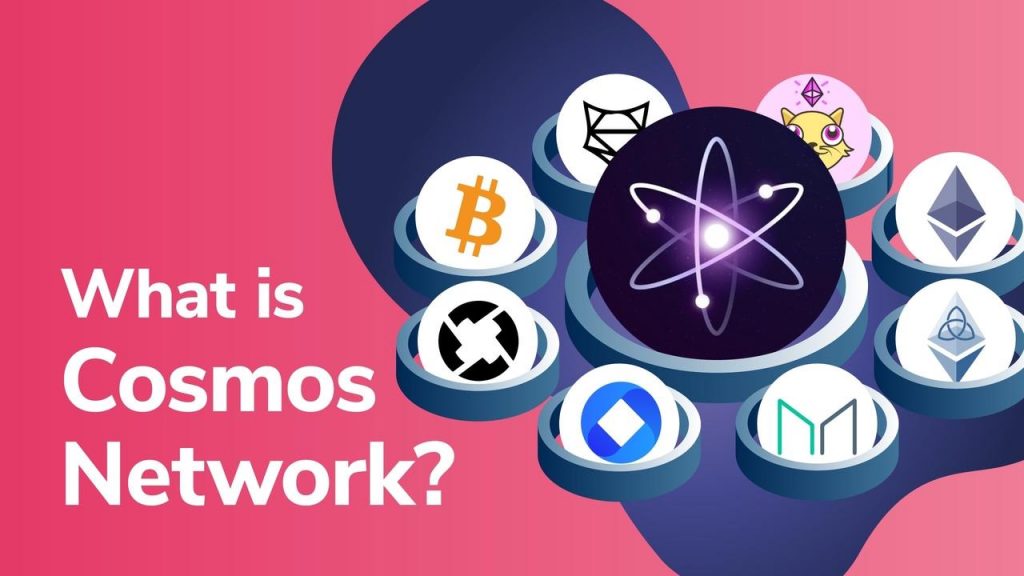
Interoperability is one of the key narratives in the blockchain industry at the moment. With new cryptocurrency and decentralized finance projects emerging across many different platforms, it’s important that these blockchains are able to speak to each other. Luckily, the Cosmos Network and the ATOM token are making this possible. The Cosmos blockchain ecosystem allows developers to build and deploy custom interoperable blockchains with ease.
In this article, we’re going to explore the various elements of the Cosmos Network. We’ll also look at how Cosmos makes it simple to create bespoke blockchain solutions. Plus, we’ll look at some of the successful projects to come from the broader Cosmos blockchain ecosystem. Also, we’re going to look at the role of the ATOM token and the exciting future for the Cosmos Network.
If you’d like to learn how to build your own dApps, be sure to check out Ivan on Tech Academy. Whatever your goals or level of experience, we have a wide range of courses that cover many different areas within the industry. From Ethereum Smart Contract Programming to Javascript Programming, Ivan on Tech Academy has the most up-to-date educational content available for the aspiring blockchain developer. Or, for those with a little more experience, why not try the DeFi 101 and DeFi 201 courses to get up to speed with the ever-changing landscape of decentralized finance.
What Is The Cosmos Network?
The Cosmos Network is a decentralized ecosystem of independent blockchains that scale and communicate with each other. Also, Cosmos Network offers an interoperable ecosystem of connected blockchains that are customizable and interoperable with other blockchains.
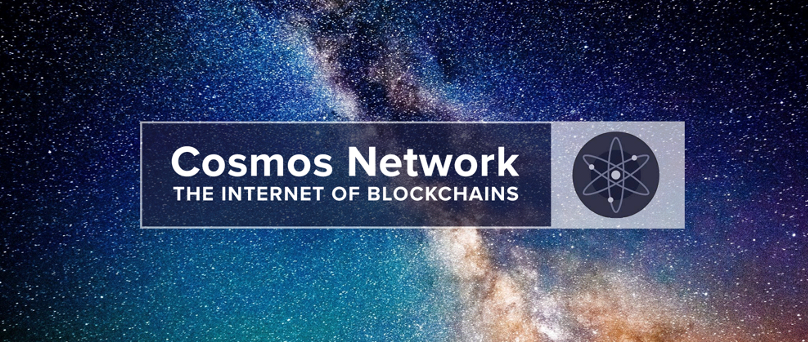
Furthermore, the Cosmos Network is not restricted to blockchains with Cosmos. Through an innovative two-layer approach, Cosmos developers can communicate and interoperate with other big blockchains including Bitcoin, Ethereum, and NEO to name a few.
Created by Tendermint, the Cosmos Network allows developers to create their own interoperable blockchain in a simple and easy-to-follow format, built with scalability in mind.
Cosmos Blockchain Tendermint BFT Consensus Mechanism
Firstly, the bottom layer of the Cosmos Network is the consensus engine that powers the Cosmos Proof of Stake, known as Tendermint BFT (Byzantine Fault Tolerance). This layer is responsible for all transactions and consensus-related messages within the Cosmos Network.
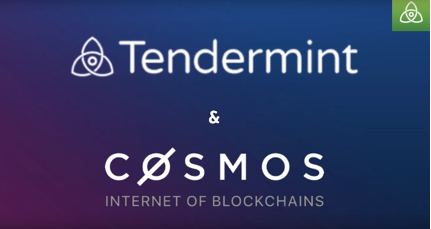
Tendermint BFT is sometimes known as a ‘generic consensus mechanism’. This means any developer building within the Cosmos blockchain ecosystem can use it. Removing the need for developers to create protocol layers to run their application allows more time to focus on building the application itself. Developers that can apply more time improving the UX (user experience), GUI (graphical user interface), and marketing an application, often see more success than those who don’t.
Cosmos SDK (Software Development Kit)
The second, and most active layer to the Cosmos Network, is the application layer. Cosmos has created its own SDK for developers to effortlessly build their own blockchains within the Cosmos ecosystem.
Cosmos SDK allows developers to build and deploy interoperable blockchains in 3 simple steps:
- Write your own custom blockchain, using Cosmos’ SDK prebuilt templates and/or your own custom modules.
- Launch your blockchain on the testnet where you can collect feedback. Also, now is the opportunity to enhance the application accordingly to the feedback before launching on the public mainnet.
- Connect your blockchain via IBC (inter-blockchain communication) protocol within the Cosmos Network to gain liquidity and adoption of your application (more explained later).
One of the main attractions of the Cosmos SDK is the ability to translate popular programming languages (e.g. Java, C++ ) into a Cosmos-friendly programming language. This lowers the barriers for developers new to the Cosmos Network, to start building their own blockchains. The Cosmos Software Development Kit is the first of its kind. It allows developers to use a modular framework to quickly and easily deploy their own custom blockchains.
Modular Cosmos Hub
The Modular Cosmus Hub is where the interoperability between blockchains occurs, with the ability to connect PoS and PoW blockchains. All transactional information and swaps are performed on-chain in the Peg-Zone. The Peg-Zones are a middle blockchain between the two connecting chains. This monitors the state of the other blockchains and is compatible with the IBC protocol.
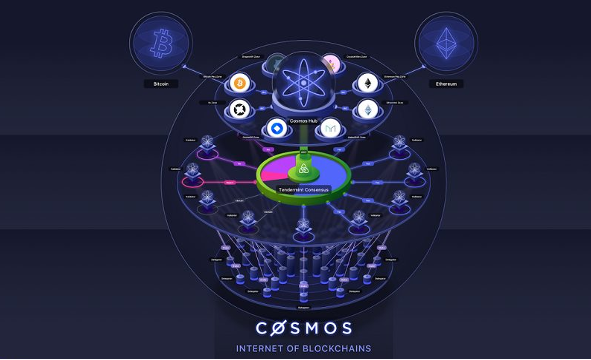
The transfer of different assets between different chains happens using the IBC, or inter-blockchain communication protocol. The IBC is a reliable and secure inter-module communication protocol that establishes finality between two chains. For example, Bitcoin blockchain to Ethereum blockchain, or any other chains within the blockchain ecosystem.
Why Choose The Cosmos Blockchain Ecosystem?
The Cosmos Network has a few unique selling points when it comes to development, and below we have gone into detail about how Cosmos is scaling for mass adoption.
Also, Cosmos allows developers to create their own custom blockchains easily. This offers a lot more opportunity when creating projects, as opposed to building applications on top of other chains (like Ethereum or EOS). Furthermore, developers have more control and freedom over governance and how the blockchain protocol operates.
The Cosmos SDK has proven popular for some large names in the crypto space. These include Aragon Network - the creators of software to build DAOs (decentralized autonomous organizations) transferring from Ethereum to Cosmos in recent years. Additionally, the world’s largest Bitcoin exchange by trading volume also used the Cosmos SDK to create the Binance DEX. Make sure to check out our Binance Ecosystem article if you’d like to learn more!
Scalability
By using the Tendermint consensus mechanism, the Cosmos blockchain ecosystem can process thousands of transactions per second. This dwarfs PayPal’s modest 193 transactions per second. Through both horizontal and vertical scalability solutions, Cosmos has expanded its network while increasing available computational power. Cosmos Network was created with scalability in mind. This makes it easy for developers to deploy and share their blockchain applications with others. This is also why Cosmos Network is sometimes referred to as the ‘internet of blockchains’.
Interoperability
The Cosmos blockchain ecosystem is vast and diverse, with the option for developers to operate with chains outside the Cosmos ecosystem. Additionally, there are some other benefits to the interoperability of the Cosmos Network. Let’s say you are a developer and have just released your new token on your own blockchain. It may often be the case for individual developers to only have a small amount of liquidity on their chain.
If there are blockchains within the Cosmos network that have significant liquidity, developers can easily transfer their own asset or token to the high-liquidity blockchain. This process is achieved by locking up the asset on your chain, then sending an IBC formatted ‘packet’ to the Cosmos Hub to confirm the asset is locked. Once confirmed, synthetic versions of the asset will appear in the Cosmos Hub for people to buy and trade and transfer to another blockchain if preferred. This is a simple and easy way to organically increase liquidity on your own chain.
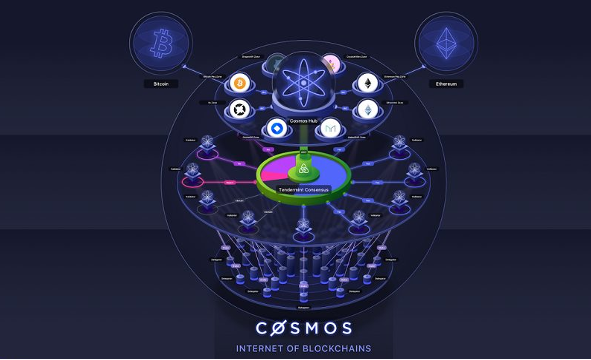
Without this kind of blockchain interoperability within Cosmos, or indeed the broader blockchain space, it would limit the opportunity for creation and growth within the industry.
Developer-friendly
If you’re not sold yet on using Cosmos for your next project, consider this. If you are a developer and have a new idea for a feature to be used on a platform, this may take a while to be processed if the application was built on Ethereum. This is due to the restrictions of building on another blockchain.
If an application features a new protocol, before it can be processed through the EVM (Ethereum Virtual Machine), a new EIP (Ethereum Improvement Proposal) must be suggested and voted for by the Ethereum community.
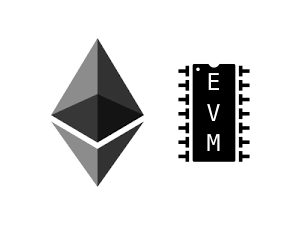
Cosmos bypasses this issue, allowing developers to create their blockchains with an individual governance structure. In turn, developers have the opportunity to introduce innovative features to applications in a much shorter space of time than with Ethereum.
Blockchain is the most in-demand skill right now, sector-wide. There has never been a better time to invest in yourself and your education. Students at Ivan on Tech Academy can create a personalized study plan and have access to a personal mentor to help throughout the journey. Ivan on Tech Academy has courses that cover everything crypto and blockchain-related. Regardless of experience, Ivan on Tech Academy can guide you to landing your perfect job in crypto!
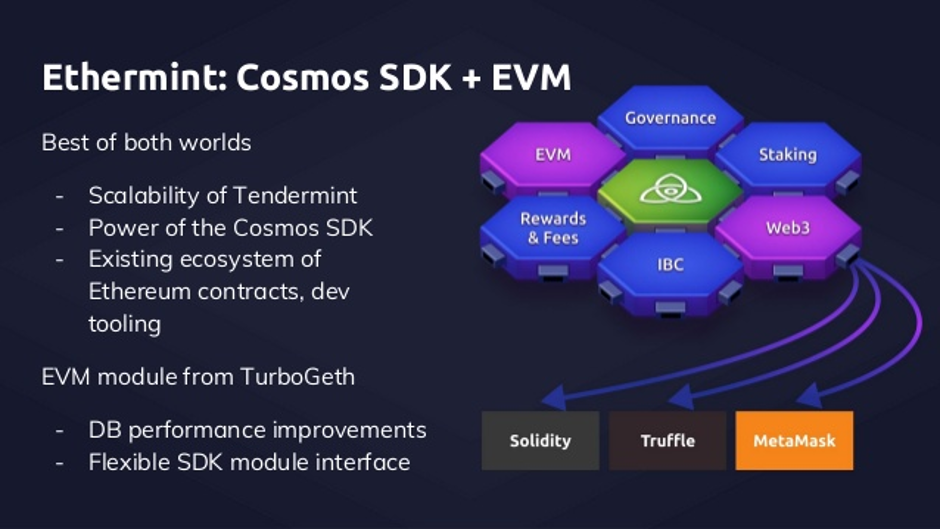
Cosmos Atom Token Model
The native token of the Cosmos blockchain ecosystem is the ATOM token. However, it is worth noting the ATOM token is not used across the entire Cosmos ecosystem. The ATOM token use case is specific to only the Cosmos Hub. There are several other hubs and zones (chains) within the Cosmos Network, each with individual tokens and tokenomic formats.
The ATOM token is used to pay fees in the Cosmos Hub to allow for cross-chain swaps. The fee is proportional to the amount of computational power required to complete the transaction. This works as a similar protocol to Ethereum Gas. Users don’t have to pay the fee in ATOM alone either, users have the option to pay in other tokens too.
Also, Cosmos makes publicly clear that the ATOM token is not like a ‘normal’ cryptocurrency that you would hodl using a hardware wallet. The ATOM token is hyperinflationary, with incentives for staking to secure the Cosmos Hub. Stakers receive a proportion of fees in the various currencies depending upon the number of ATOM tokens staked.
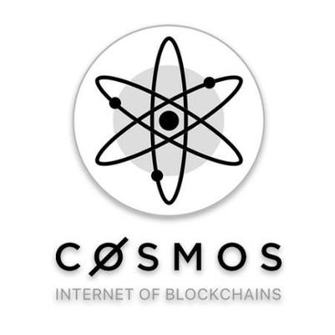
Additionally, ATOM holders also retain governance and voting rights to the Cosmos Hub. Users can vote on proposals and updates to the protocol using their staked ATOM tokens. Staking ATOM tokens offers around 8% APY at the time of writing, however, this may change in the future.
The ATOM token model has no fixed supply, with an approximate 4% inflation each year. This is done to ‘punish’ the holders of ATOM tokens who are not staking or securing the network. The value of their tokens will decrease, as the stakers will see returns.
Exploring The Cosmos Blockchain Ecosystem
Since its launch in 2019, Cosmos Network has contributed towards the development and foundations of many successful projects and blockchains. Below we have listed just a few of the popular protocols that have emerged through the Cosmos blockchain ecosystem.
Kava
Created using the Cosmos SDK, Kava is the first cross-chain DeFi platform allowing interoperable borrowing and lending, stablecoin loans, and other financial services for a range of cryptocurrencies. Additionally, Kava protocol is open-source, allowing developers to use the infrastructure within their projects. Kava Labs released Harvest.io in October, the world’s first cross-chain money market.
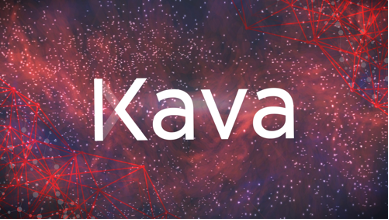
The Kava protocol allows developers to seamlessly create and deploy decentralized financial applications within minutes, using its cross-chain framework and infrastructures.
Injective protocol
Injective Protocol has been a top performer of 2020. The Injective Protocol was created using both the Cosmos SDK and integrating Ethereum’s VDF (Verifiable Delay Function), which prevents front-running on Injective’s layer 2 DEX.
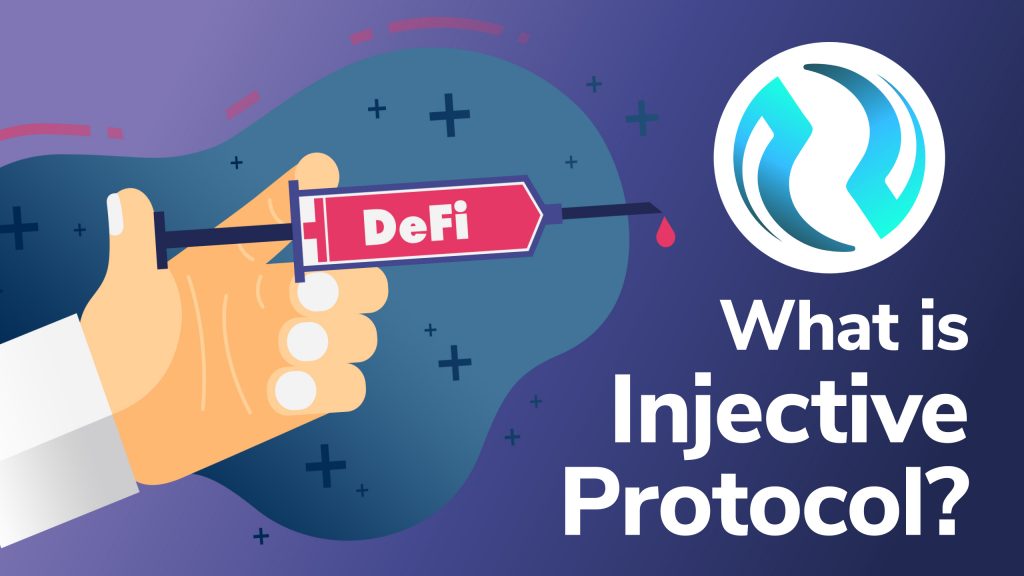
Injective Protocol is the first-ever project to both emerge from Binance Labs and take off through the Binance Launchpad. Also, Injective Protocol is the first layer 2, interoperable, completely decentralized exchange. Furthermore, the protocol has strong tokenomics, alongside solid fundamentals for this project to do well in the future. To learn more, make sure to check out our Injective Protocol Deep Dive article if you haven’t already!
Band Protocol
In case you missed our Blockchain Oracles article, for many smart contracts and applications to operate, there needs to be an oracle to bring data on and off the blockchain. Chainlink is currently the top-performing oracle created on the Ethereum blockchain, although the protocol is blockchain agnostic.

Following this, the Cosmos IBC protocol decided to create an interoperable, cross-chain decentralized oracle. Launched through the Binance Launchpad, Band Protocol was created as the Pepsi to Chainlink’s Coca Cola. Bandchain can process thousands of transactions in seconds boasting near-instant finality. Band Protocol saw incredible price action during the summer of 2020 seeing the BAND token reaching $17.51. Currently, BAND tokens are priced at $5.46 at the time of writing.
Cosmos Blockchain Ecosystem Summary
Although there are now other competing interoperable projects such as Polkadot, the Cosmos blockchain ecosystem holds many exciting, up-and-coming projects for 2021. The Cosmos Network makes it easy for developers to create their own custom blockchains, and effortlessly interoperate the chains with other, larger chains.
In short, the Cosmos IBC and Peg-Zones allow interoperability with other blockchains with ease. Cosmos Network has introduced scaling solutions created with mass adoption in mind. For mass adoption of cryptocurrency to become a reality, blockchains need to become interoperable with one another. We can expect to see further developments from the Cosmos Network, as the cryptocurrency space continues to expand and develop.
Blockchain is becoming an essential part of every industry. However, the demand for blockchain specialists exceeds the supply of skilled developers. Ivan on Tech Academy is the number one blockchain education suite, recognized globally within the industry. If you feel that the company you work for could utilize blockchain, why not put yourself at the front of the crowd? If you want to be the go-to person in your company for all things blockchain, Ivan on Tech Academy has an array of courses that cover every aspect of the industry. From Fintech 101 to Blockchain Business Masterclass and Ethereum Game Programming, Ivan on Tech Academy has all the resources you need in one place.
